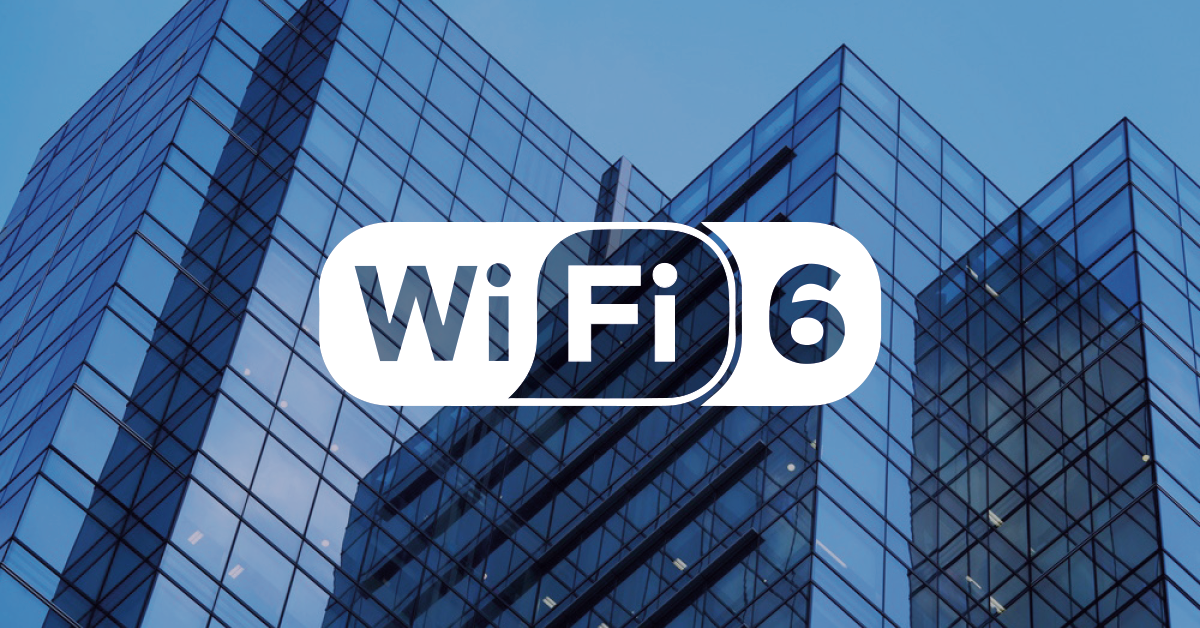This blog post is now offered as a free audio version:
You no doubt know about Wi-Fi 6, and how it is a technology that will shape future networks. In fact, alongside 5G, it will have one of the biggest effects on upcoming devices, networks, and consumer expectations over the next few years. But is Wi-Fi 6 already here? What are the biggest benefits? And what does it mean for your networks? Keep reading, because I've got answers for you!
Next Generation Wireless
Obviously if we're calling it "next gen", then it needs to be better/faster/more efficient. It is all those things. But it's also other things. Perhaps most importantly, you won't have to remember the clumsy "802.11something-or-other" nomenclature that made talking about WLAN so difficult in the past. The new version is simply called Wi-Fi 6 (802.11ax if you insist on it), and the older versions are also numbered accordingly (802.11ac is Wi-Fi 5 and 802.11n is Wi-Fi 4). Wunderbar!
But of course, there are other selling points of the new Wi-Fi standard. Here are some of them.
It's faster.
Although this isn't marketed as the biggest benefit, it goes without saying that data transfer speeds will increase. Some reports expect a thirty percent improvement. But the real benefits will be for bigger networks with many end-points.
Better performance with many connected devices.
Wi-Fi 6 brings improved performance for crowded areas like offices, sports stadiums, or hotels. The new standard does this in two ways: by increasing network capacity (thanks to higher throughput and transmit beamforming), as well by improving simultaneous communication between access points and multiple end-points. The latter is possible due to several technologies, of which the following are the most important:
- OFDMA (Orthoganal Frequency Divisional Multiple Access) - Building on the functionality of OFDM (already available in previous Wi-Fi standards), OFDMA gives access points the ability to divide channels into many sub-channels. What this effectively means is that access points can communicate with multiple devices at the same time at a lower data rate.
- MU-MIMO (Multi-User Multiple-Input-and-Multiple-Output) capabilities - Wi-Fi 5 was already using MU-MIMO for downlinks. Wi-Fi 6 utilizes it for uplinks too, enabling access points to simultaneously receive communication from multiple clients.
The combination of OFDMA and MU-MIMO results in more efficient networks and reduces overall network latency. Other elements help with this, like 1024-QAM, but we won't go into all of them here.
Better power management for connected devices.
The new standard supports a feature called "Target Wake Time". This lets the access point put a device's Wi-Fi functionality to sleep for a defined period of time, before it "wakes up" again to connect. It's a great feature for reducing the power usage of devices and thus increasing their battery life. This is especially good news for Internet of Things devices.
So Where's the Wi-Fi 6 At?
If you've been following the progress of the new standard, you will know that it's had quite a tumultuous story already. At first, it failed twice to get approved by the standards committees. This meant that many access point vendors, in a bid to be first-to-market, had to manufacture and commercialize their devices without knowing what the standard would end up being. Risky, but it seems to have paid off since the approved standard will not be so far removed from the rejected ones.
Because Wi-Fi 6 access points are already commercialized, this technology is currently being built into new networks. But this doesn't help if users don't have devices that support it. Compatible end-points are slowly trickling forth from manufacturers. The new Samsung Galaxy S10, released in March 2019, is the first Wi-Fi 6 phone. Intel's new 9th generation chips have Wi-Fi 6 capability (although you'll have to pay through the teeth for them), and Intel also released Wi-Fi 6 adapters in April 2019. The selection of routers that support Wi-Fi 6 is already comprehensive, with major players like NetGear and Cisco already offering devices.
Despite these initial few devices, the fact that the Wi-Fi Alliance has announced that a Wi-Fi 6 certification program will only begin in the third quarter of 2019 indicates that the flood of Wi-Fi 6 devices is still some way off.
What Does This Mean for Your Network?
Based on the fact that routers and access points are already available, but the end-points are only starting to arrive on the market, the answer is, "Probably nothing for a while." What you can do now is start researching what's out there, and perhaps start preparing your budget for the upgrades. But, all things considered, it might make sense to wait before purchasing new access points or routers, since these devices will only improve in the coming months.
If you do decide to start implementing Wi-Fi 6 routers and access points now, you won't see a return on investment for quite a while. Even though we're starting to see compatible devices appear, it is expected that it won't be until late 2020 (or even later) that Wi-Fi 6 devices truly become ubiquitous.
Until then, enjoy your 802.11ac...uh, I mean Wi-Fi 5.
Are you getting ready for Wi-Fi 6? Or is it not yet on your radar? Let us know in the comments below.
 Published by
Published by 




.jpg)






